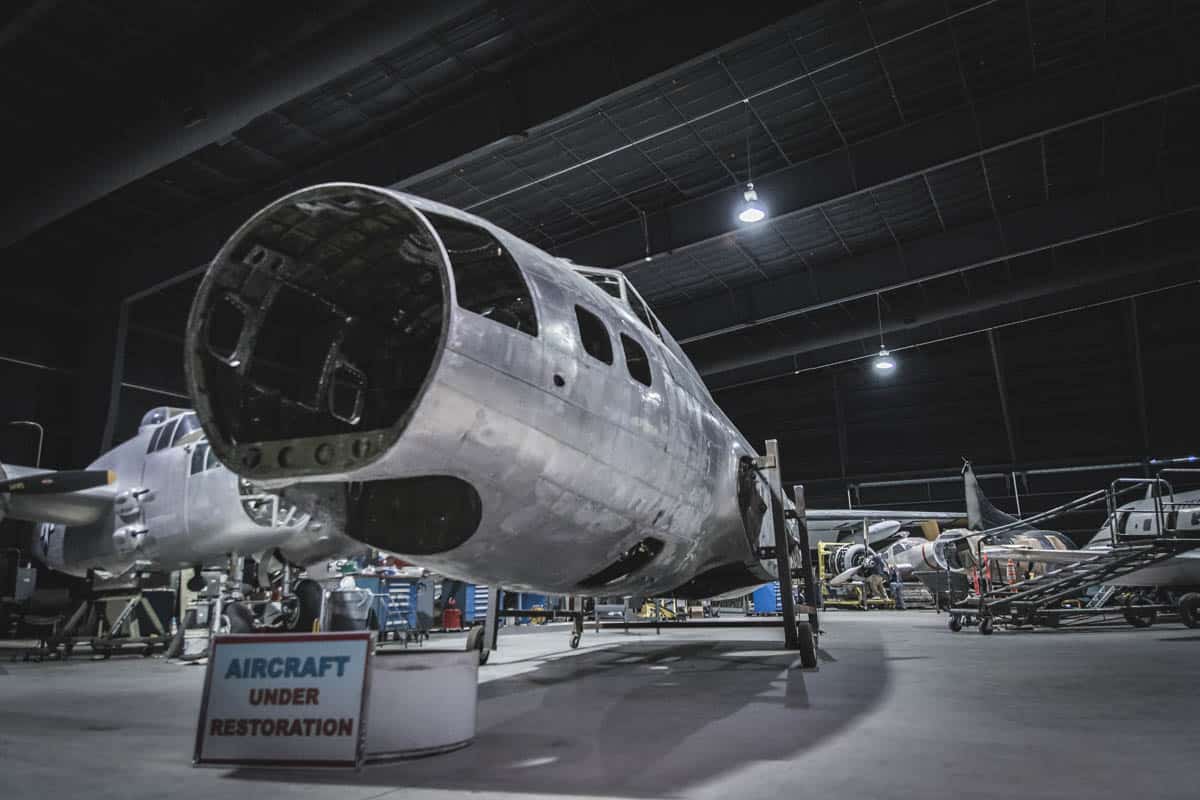In January 1982, almost three years before the Museum of Aviation opened to the public, museum staff submitted paperwork to the Air Force requesting a B-17 Flying Fortress. Who knew it would take over 33 years to finally get our B-17! When I say “our B-17,” I truly mean that. It’s yours and mine. As Americans, we can claim the legacy of the B-17 as our own. It is part of our heritage, it is part of who we are.
When I was boy, a family friend loaned me a thick book about the B-17 Flying Fortress. It was my introduction to this iconic airplane and I marveled at the huge, sweeping story. I continue to marvel today. The B-17 is a remarkable machine but, as with all artifacts, its value is in its relationship to people. So I want to emphasize that the story of the B-17 is a story about people.
It’s a truly amazing story with thousands of characters:
– There are the air power advocates who found in the B-17 an aircraft capable of testing their theories about strategic bombardment.
– There are the executives, engineers, test pilots, factory workers, and others who developed and built over 12,700 of these remarkable airplanes.
– There are the combat commanders who sent thousands of young men into combat to inflict–and suffer–destruction.
– There are the maintainers and other support personnel who kept the airplanes flying.
At the center of the story is the combat crew. A typical B-17 had a 10-man crew—four officers and six enlisted men. They were young and they came from all across the country and all walks of life.
The war brought them together inside a 75-foot-long metal tube with wings where they melded into a combat crew. Inside that tube, those men were positioned literally from one end to the other. At the front, the bombardier’s head was within inches of the nose glass when he used the bombsight. At the other end, the tail gunner sat at the very back of the airplane in his lonely but critical position.
With their planes loaded with fuel and bombs and machine gun ammunition and oxygen tanks, those men flew five miles above the ground and endured blasting wind, freezing temperatures, antiaircraft fire, and enemy fighters.
Through all of this, they helped defeat a ferocious enemy and save the world.
This is a story that needs to be remembered and shared.
The pieces of our B-17 are now at the museum. It is thrilling and humbling to look closely at the parts. The famous chef Julia Child once said, “[This food is] so beautifully arranged on the plate – you know someone’s fingers have been all over it.”
That sentiment also applies to the B-17. The airplane was built on an assembly line but people were an essential part of the manufacturing process. The little bumps are rivets and every one of them was installed with hand tools. After the airplane got to the field, the fingers of the mechanics were all over it. Now it is the turn of our restoration team members to put their fingers all over it.
And they have their work cut out for them. Our B-17 is in rough shape. The airplane was already about 16 years old when it made its final flight to Indiana. It has been sitting outside for 54 years. We will be able to save this airplane—barely.

Museum restoration supervisor Tony Day (left) and restoration volunteer Bob Denison look at one of the B-17’s engines.
As much as possible, the restoration will happen in public view in the Scott Exhibit Hangar (also known as the “World War II” Hangar). Restoration will be a long, slow process and we will need your help. We want to restore not just the outside, but the inside to a condition of excellence.
Some people may ask why go through the expense of restoring the interior when most people won’t be able to see inside? That’s a great question and would make for a good conversation. For now I would simply say that this is what museums do. People trust museums and when they visit a museum, they expect to see historical objects that have integrity. We want this to be more than just an empty shell.
As our B-17 begins its life here at the Museum of Aviation, it serves as a caution about allowing our history to corrode. We can’t save everything and should not try. But there is a place for stretching and even sacrificing to preserve our most significant and rare artifacts. The main reason we were able to get this B-17 is because we can put it inside. I commend the courageous and visionary people who took the steps necessary to build the Scott Hangar.
I also want to add my thanks to those who have helped to bring the B-17 to the Museum of Aviation. This is one of the most important events in the history of the museum.
Mike Rowland, Curator















